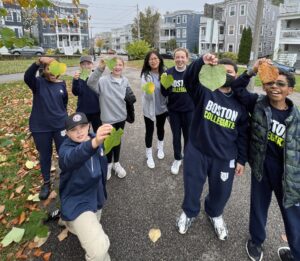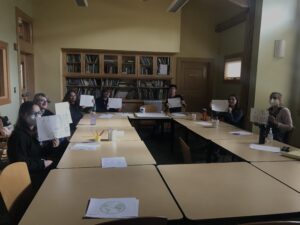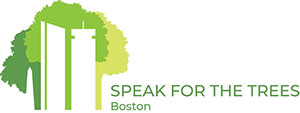Looking to bring trees into your school curriculum?
We have numerous lesson plans for teachers interested providing lessons on tree equity and the importance of urban trees. These lessons all align to BPS standards. Please feel free to peruse the lessons on this page and use them in your classroom. And, of course, we’d love to collaborate. Please don’t hesitate to reach out!
Please note that these lessons can be adapted for all age groups and grade levels.
Tree ID and Leaf Etching: 1.ESS.1.2 / 1.LS.3.1 / 3.LS.4.2

This lesson introduces students to various tree species common in Boston, the importance of those trees, and how to identify them. Through group discussions and an outdoor tree identification walk, the young students explore why trees are important, what different trees look like, and why people like trees. They will also make leaf etchings with the leaves they had collected outside. The goal is for students to know and think more about the trees and greenery around them.
Urban Heat Island Effect: 7.LS.2.4 / 8.ESS.3.5 / HS.ESS.2.6
This lesson will allow students to study the urban heat island effect (UHI) and how trees mitigate the UHI. Students will use SFTT Tree Equity Maps and Tree Equity Score maps to study temperature disparities in neighborhoods throughout Boston before researching their own neighborhoods.
Benefits of Urban Trees: 5.ESS.3.1 / 6.ETS.1.1 / 7.LS.2.4 / 8.ESS.3.5
This lesson discusses the importance of urban trees and achieving tree equity in Boston. The discussion includes tree benefits, environmental justice, and the history of exclusionary policies such as redlining. Most of the material focuses on the issue of equity and the historical causes for the lack of equitable distribution of environmental benefits today as a result. This will lead into an activity that has students draw “trees in action” and hold a group discussion on the benefits they chose to highlight.
"Map Your Neighborhood" A Lesson on Tree Equity: 7.LS.2.4 / 8.ESS.3.5 / HS.ESS.2.6
 In this lesson, students will be taught about tree equity, including information on tree distribution, the history of redlining, and the urban heat island effect. Students then participate in a “draw your neighborhood” activity, where they show the locations of trees in their own neighborhoods and mark where more trees could be planted. This allows students to relate the topic of equity and the lack of distribution to trees to all communities to their own experiences. This activity is followed by a group discussion on which neighborhoods have more trees and what tree distribution looks like in their communities.
In this lesson, students will be taught about tree equity, including information on tree distribution, the history of redlining, and the urban heat island effect. Students then participate in a “draw your neighborhood” activity, where they show the locations of trees in their own neighborhoods and mark where more trees could be planted. This allows students to relate the topic of equity and the lack of distribution to trees to all communities to their own experiences. This activity is followed by a group discussion on which neighborhoods have more trees and what tree distribution looks like in their communities.
Researching Tree Equity: 7.LS.2.4 / 8.ESS.3.5 / HS.ESS.2.6
This lesson will teach students about tree equity and the disparity in tree coverage between Boston neighborhoods. They will also delve into the “why” of tree disparity in cities before researching the canopy coverage and adverse outcomes in their own neighborhoods. This lesson will also incorporate American Forests’ Tree Equity Score (TES) map.
